As one does before seeing a show by a well-loved band, I muse on my own personal history pertaining to this group as I make my way to Camden to see Einstürzende Neubauten perform their latest release Lament. I can work out in approximations that I have loved this band since 1984 or so and I’ve seen them around 20 times before. They are a group I never tire of, one I never lose my love for.
Lament is a performance work commissioned by the city of Diksmuide in Belgium to mark the centenary of World War I. One marvels at the genius of the commissioners in choosing EN to be their ambassadors; I picture outdated businessmen in stern suits convening in a bleak office and listening to Neubauten records and concluding that yes, this is who will represent and create the tribute. Did the elders of Diksmuide decide that the piercing squeals of aircraft turbines should be left in the hands of those most experienced with making music of machines and that the sounds of war could be best handled in the loudest way somehow known to them? How did that happen? The stories are well documented now, and you can read all about it, if you haven’t already done so, elsewhere. What’s interesting is that this most creative force that Neubauten consistently is was for once given an idea. An assignment. The Belgians chose wisely, for Neubauten have put so much research and creation into bringing back to life a long-gone tragedy as to make the war live again and show how it is part of whole cycle of conflict which is without end — we are always at war.So this show: The stage is stark and full of things. Metal things. In the dark, the technicians to and fro minimally, clearly well prepared. The photographers in their pit are busier setting their equipment. The crowd is quiet but excited. One light shift sets off a predictable whooping but quiet comes again until the band calmly arrive. In fact, the crowd is noticeably not young. Where are the kids? I want to begin a commentary on this but the show starts. The small assembled orchestra on stage is mostly female, and we joke that Einstürzende Neubauten has become a girl band. With bright light and little ceremony, our men take the stage — this is a black and white show. Immediately it is obvious; there would have been little colour available in the war, in the films about the war, in the lives of the soldiers, in the trenches. There will be little colour tonight.
A searing scraping commences, Alexander Hacke at work with vigorous lambchops and a refreshed demonstration of discomfort in the sound of nails on chalkboard; a pool table-sized platform is revealed and sharp metal points tear at its surface, sending me nearly blind with teeth-grinding tension. Blixa Bargeld, ever suave and collected, shows us placards full of war theory. Another structure of metal and an air raid siren is being quickly assembled. Rudy Möser is drilling away at large metal springs while, out of my view but definitely in my hearing, Jochen Arbeit is putting his vibrator to good use exciting his guitar strings. I am almost deaf already. Chains are thrown on things.Predictable thoughts harass me; this sounds like war. Every person on stage is doing something and, as is habitual with EN, it’s hard to know where to listen until one achieves a cranial rhythm which suffices to carry one through. At which time everything goes sublimely majestic as Neubauten and their little orchestra perform an amalgamation of all the national anthems in “Hymnen.” It’s beautiful.
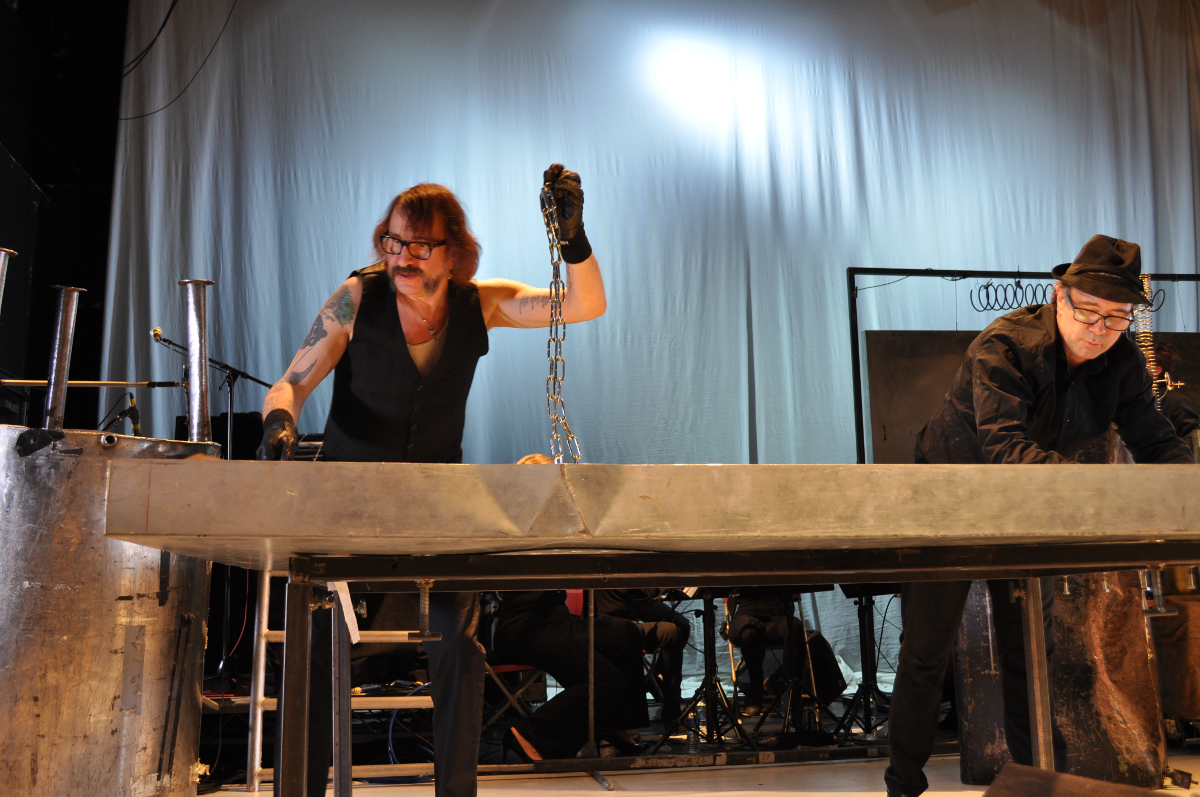
A fair amount of explanation by words is offered periodically throughout this performance. Einstürzende Neubauten want us as an audience to comprehend what their work and research has revealed. The clear pauses for telling us what is what are simple and help to make sense of some pretty obscure representations of World War I. Neubauten have delved into details of that particular history and fished out little-known incidents and occurrences to present a fresh hell view of history. With no condescension whatsoever, Blixa explains and we learn. Neubauten are going to soundtrack this war and prove its futility. 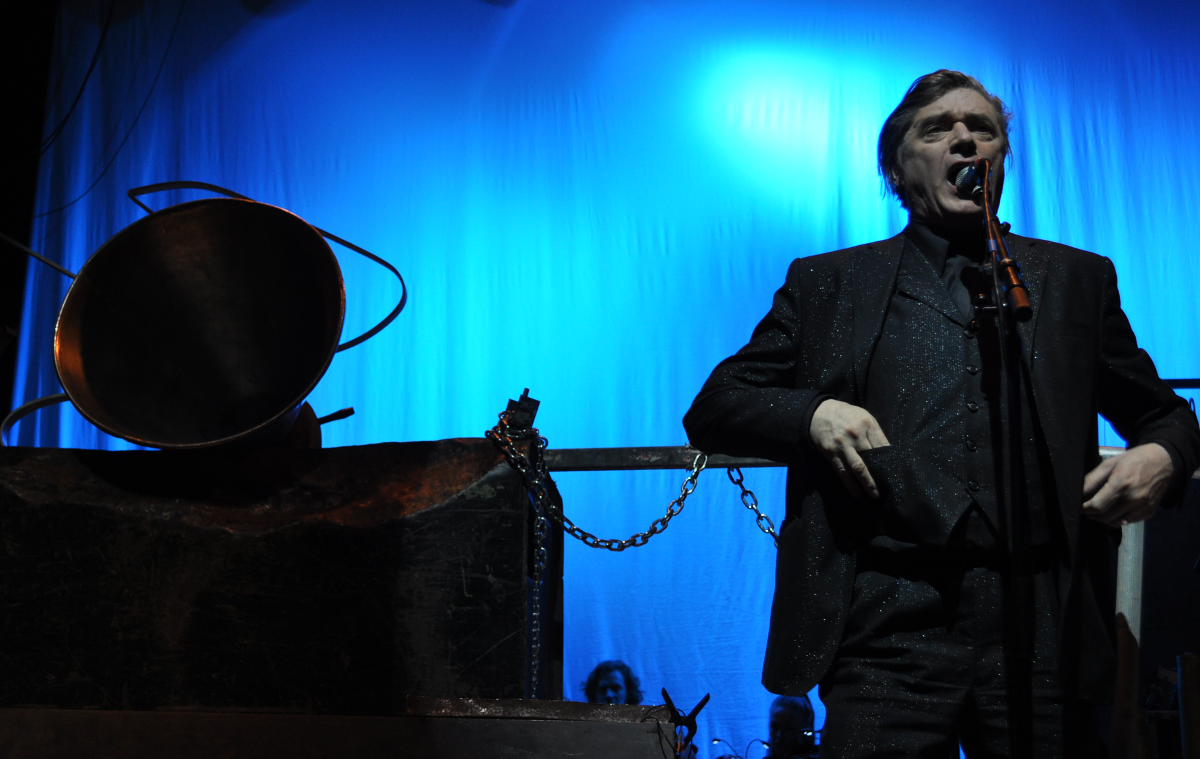
Blixa’s explanations continue. He apologizes for his poor Flemish and introduces a barbed wire dulcimer to be played by NU Unruh. “Flemish Coucou,” he repeats. To make the connection to the importance of barbed wire is simple. To comprehend the words –for me — impossible. As ever, I am again blissed-out with rhythm and Blixa’s gentle voice.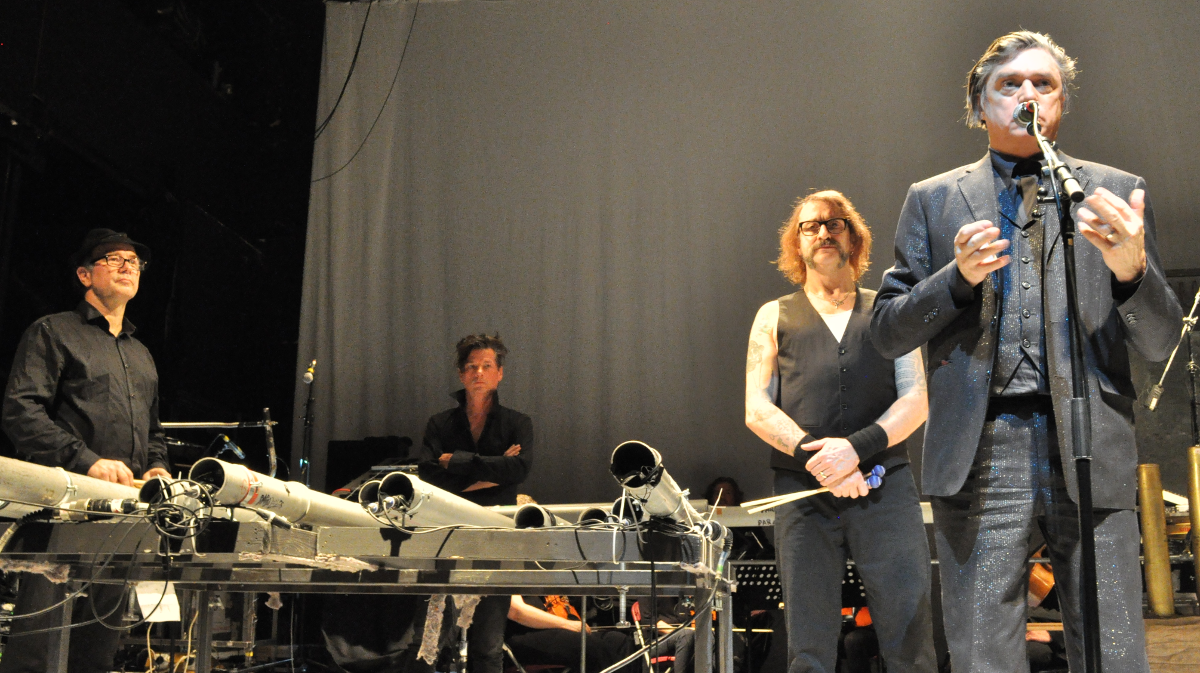
It is around now I start to lose my sense of being a person at a concert and begin to be fully engaged in the performance, so that note-taking and detached observation is forgotten. The rest of my experiences of this show:
I find I love Hacke singing the proto-jazz songs of the Harlem Hellfighters. My eyes stay busy trying to see everything that everyone does, but it is impossible. I register some details — percussion by Unruh’s feet and knees tapping in another testimony to his fitness on “Achterland,” Hacke creating another rhythm with a strung crutch on which he plucks and limps, walking wounded. No special lighting, only a lack of it to let the band become ghostly, thoughts for dead soldiers, dead horses, dead civilians, dead everything. Dead and dead and drones. War and dead.The Lament trilogy, with the Neubauten back-beat under rising violins, so exquisite, so delicate. Blixa. Air. Bells. Voices droning. Voices droning and waving. Abrupt moans suspended in that alchemical sound mystery that happens when droning voices blend. It becomes whirling. Bombed-out ears could have heard sounds like this. Is it odd to recreate what blasted eardrums might have heard? It’s what I imagine as Neubauten entrance me.
Powerful striking. Tortured spiralling. Chains. So quiet really. More striking. Loss. The string section again truly playing a lament, so sad. So eloquent. The recorded voices of prisoners being made to read in their languages the words of the Bible for the benefit of a linguist’s research. Imagining being under that sort of pressure. Becoming a voice for someone’s study of language. In that arena. On that stage. A prisoner of war, an example of the mother tongue. This is the most beautiful piece of the Lament performance. Einstürzende Neubauten treat these men’s voices with such due respect and delicacy. They make them beautiful and give them a place outside of the prisoner of war camps, outside of all that tragic badness.For me “Pater Peccavi” is such an important piece and seeing the way Neubauten use and treat these voices live is so special. They were men who spoke languages from the places they were born. They were caught up in a war of stupidity and made to speak the words of a book for a purpose of study by some other men. They suffered. So many suffered. But Neubauten brought them back to the world of now in little boxes and amplified their voices in the most elegant way. Einstürzende Neubauten made music of their readings.
“How Did I Die” is a story of deaths and possible causes of those deaths during the war. So many possibilities and questions. Here again is another quiet piece of music exploring an aspect of conflict and using a very Neubauten trademark of building from silence to cacophony, utterly thrilling their audience in a grand wind up of energy until one must move physically to fit all the sound inside. On record, this song is fairly concise and brief — live it was like learning to breathe and dance in a rebirth of super sound. Blixa’s throat screaming is so cathartic. Blixa arriving in a miked-up feathered cloak — an angel of war? No, a tribute to Marlene Dietrich. I think of her in movies; Neubauten teaches me she was an anti-fascist. She was rejected by her country. She was anti-war. More learning. The live performance of this song too is longer and more involved, a gorgeous platform for Blixa’s divine voice. Another quiet to loud to quiet demonstration of the control this band has over all that they do, and how they are able after all the years to work together.
Blixa arriving in a miked-up feathered cloak — an angel of war? No, a tribute to Marlene Dietrich. I think of her in movies; Neubauten teaches me she was an anti-fascist. She was rejected by her country. She was anti-war. More learning. The live performance of this song too is longer and more involved, a gorgeous platform for Blixa’s divine voice. Another quiet to loud to quiet demonstration of the control this band has over all that they do, and how they are able after all the years to work together.
Another tribute to the Harlem Hellfighters; Blixa sings this time. His voice is edged with soreness. I love it that Blixa pulls off such a wonderful recreation of a show tune sound and like in the previous Hellfighters song, the whole band join with the vocals, sounding persuasively like a pre-ragtime quintet choral. Also I recall those big plastic pipes again, played using compressed air guns.
In the end, Einstürzende Neubauten throw us a bone. Blixa jokes that their next album will be about the 30 Years War. We’ve been a good audience, good pupils. No shouting out for Haus der Lüge songs, in fact I have not been aware of any audience interruptions, which is so unusual at a Neubauten show. Our reward is “Let’s Do It A Dada”, unleashed on us in a sharp encore and a perfect release from all the tense study of the rest of the show. “Dada” is amazing song to dance to, a perfect energy release. But that’s it and the band are gone. I left as quickly as possible to avoid having to have any of the same old conversations one has after a show as this was not a same old show. This is a complicated work and not only have Einstürzende Neubauten put in much thought and care to creating it, they also seem very generous in wanting us to understand and be able to take more comprehension from it. The performance tonight has a lack of arrogance and a sense of enjoyment which are both invigorating. I don’t have any feeling of a message, none of the obvious lessons of anti-war sentiments or anything of the like. More just a sense of the senseless, a remembering and an acknowledgement of the depth of participation. There was more to that war than we knew and there is always war around us.-Words: Maryna Fontenoy-
-Pictures: Karen Bergeon-
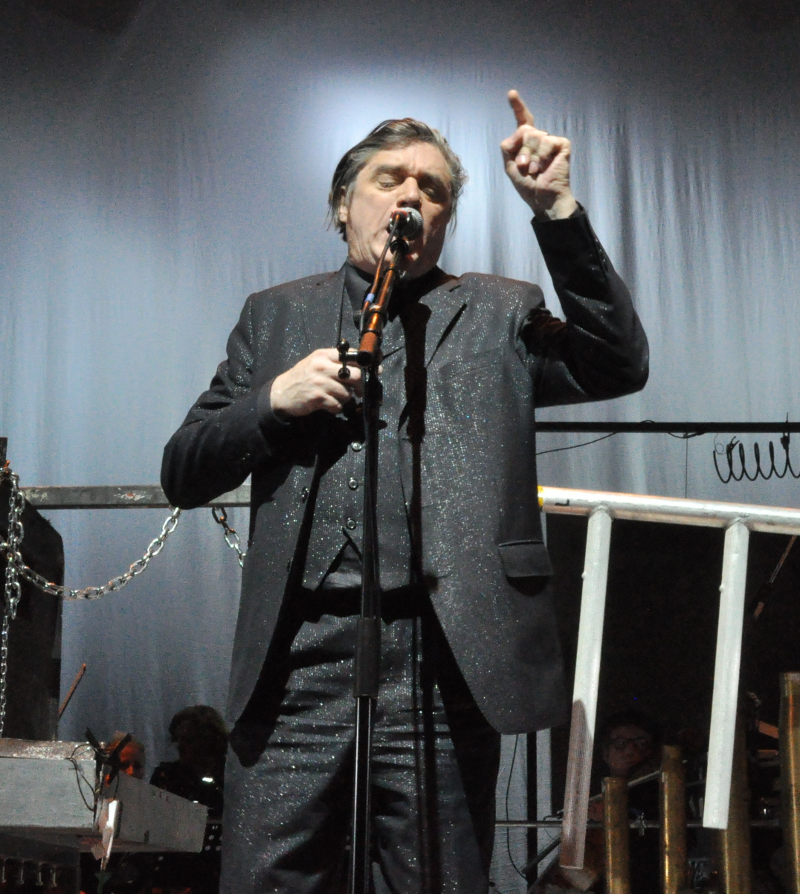
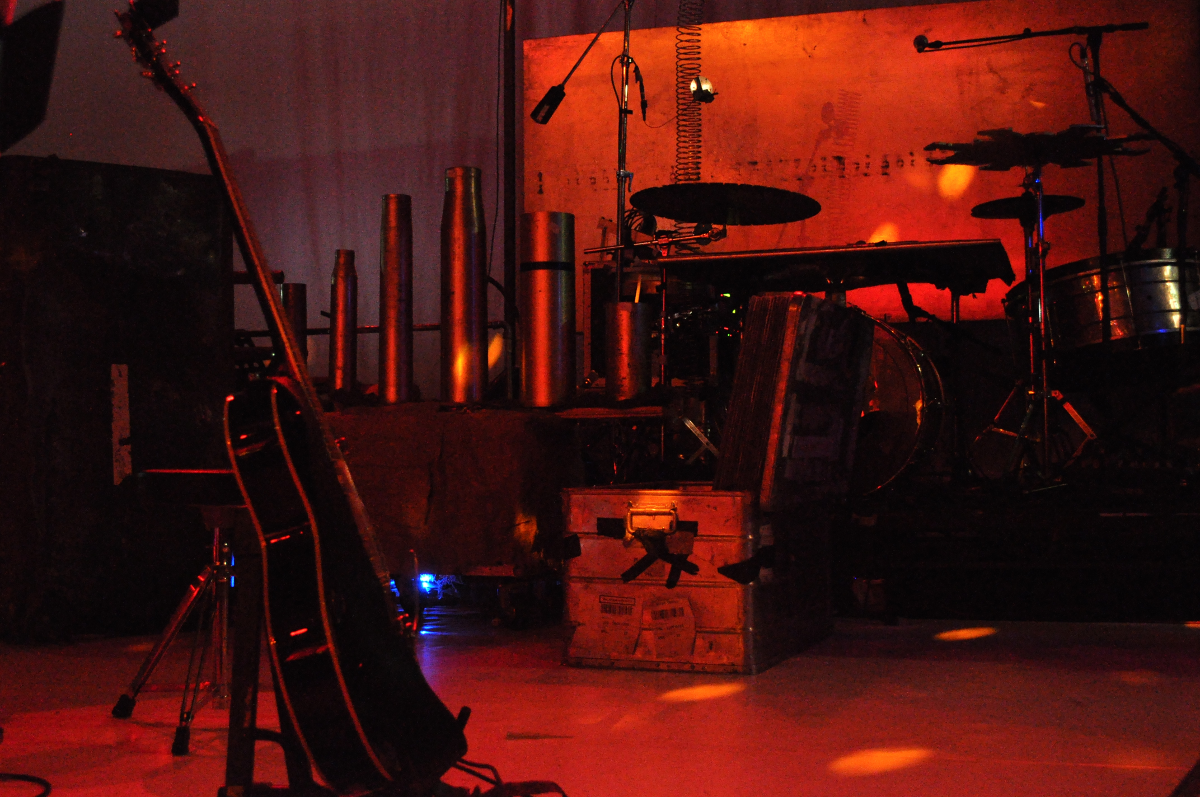
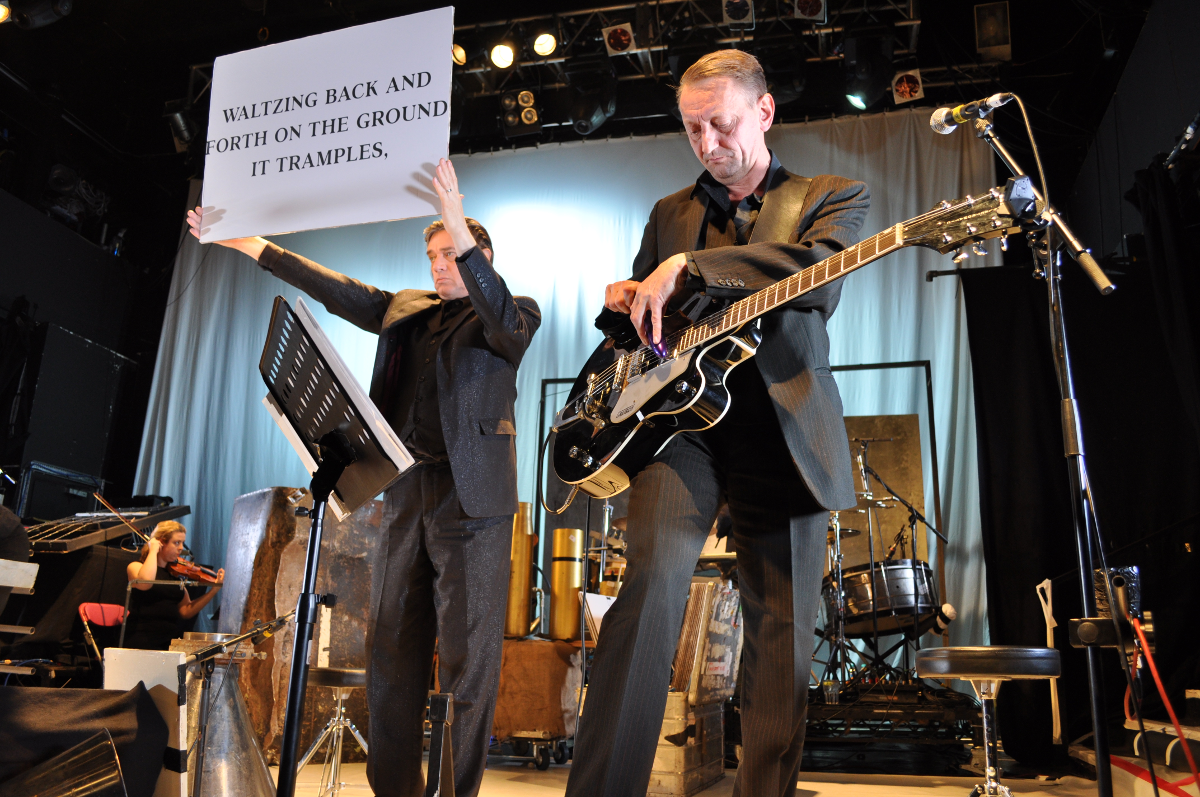
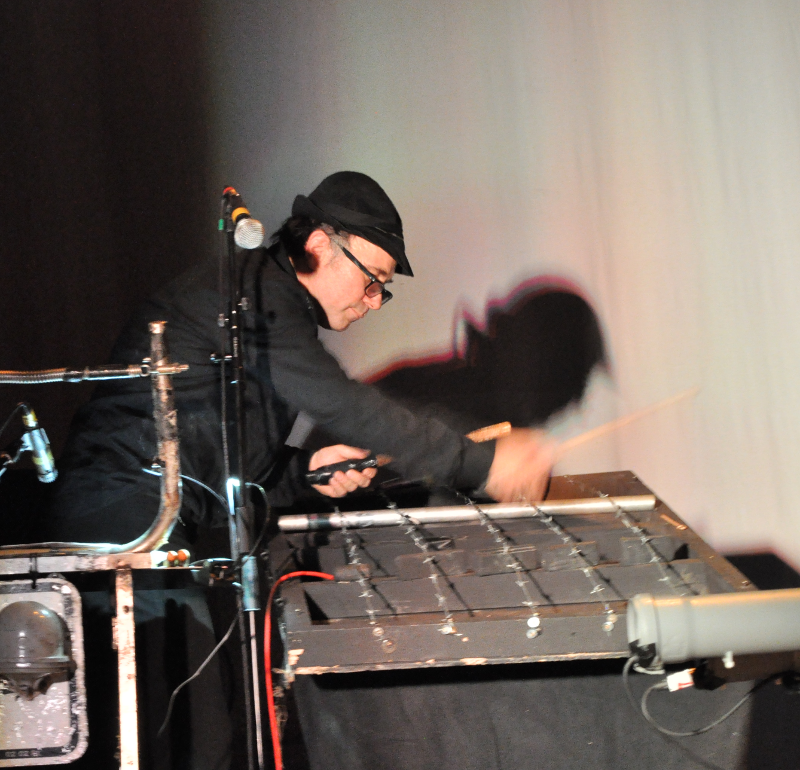
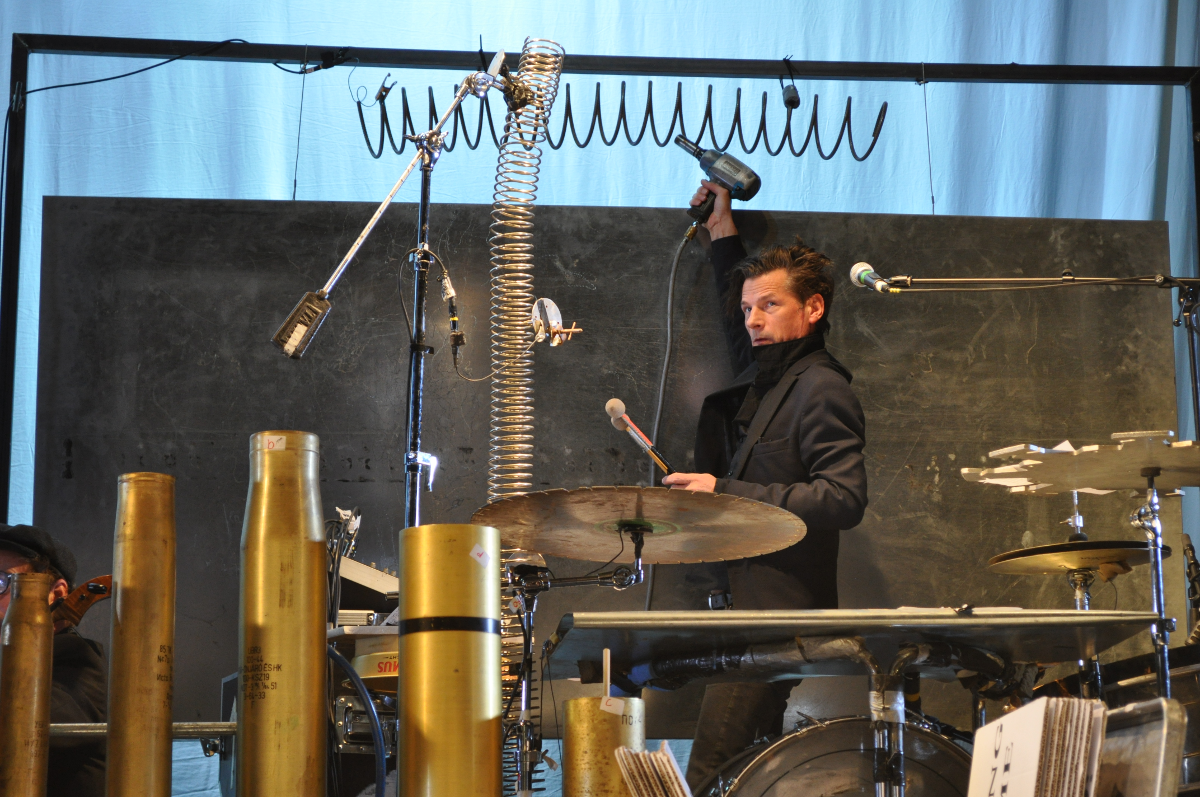
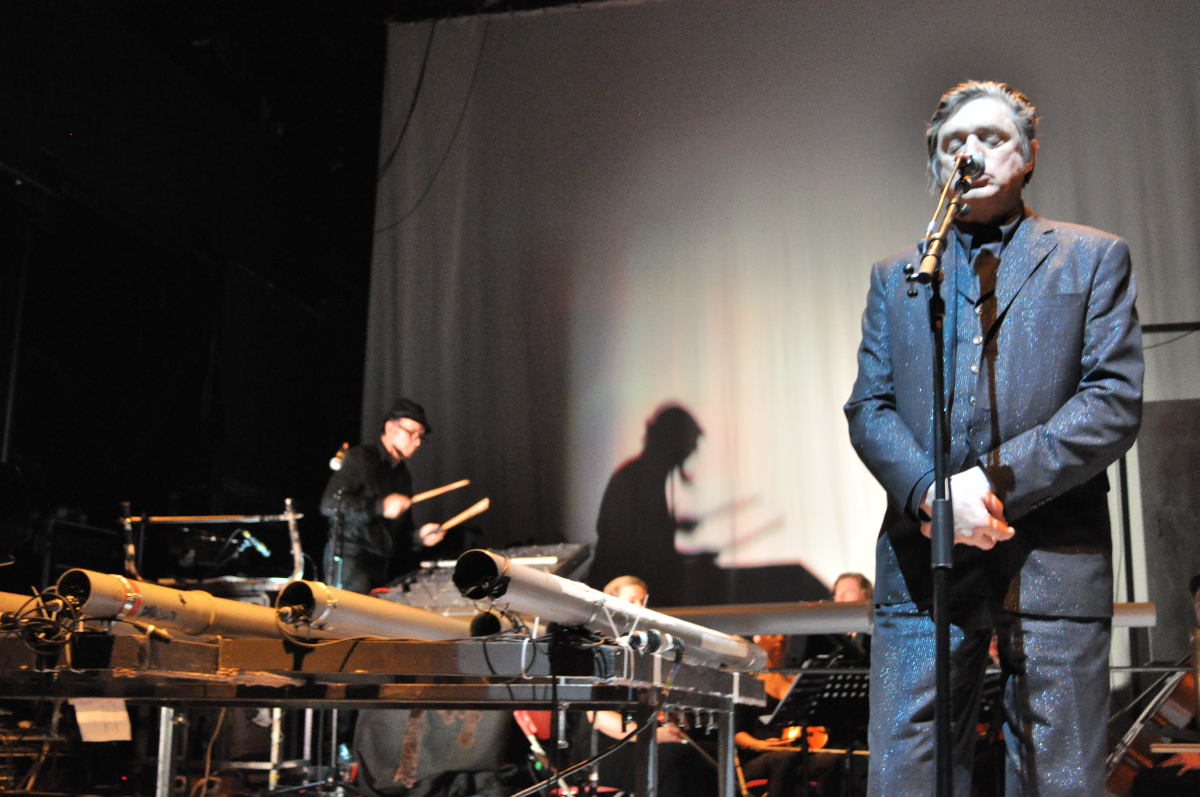
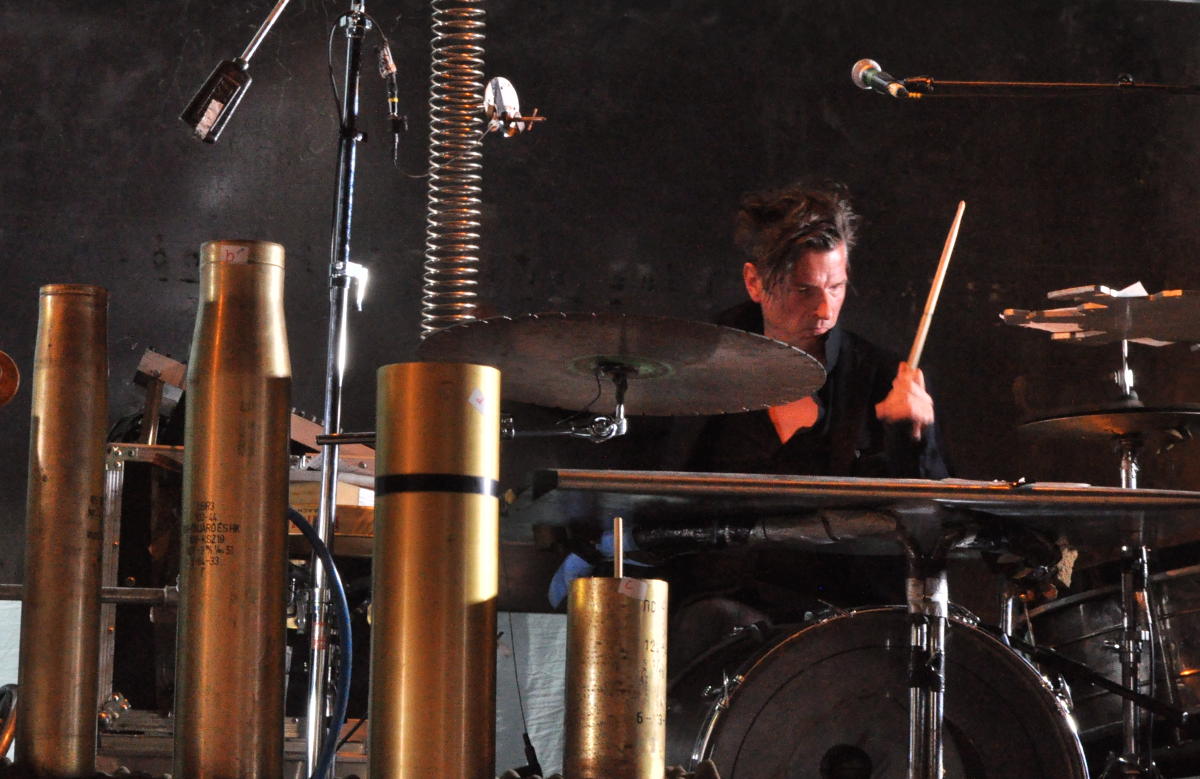


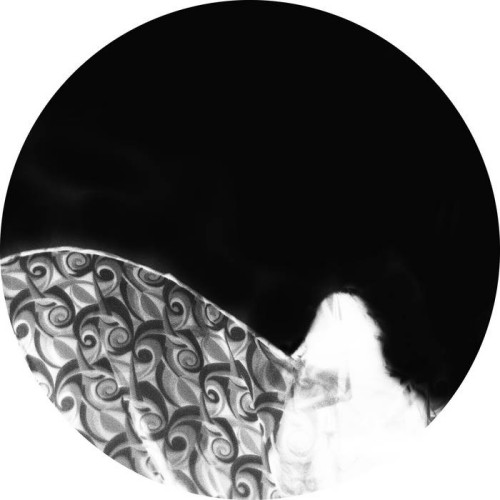
2 thoughts on “Einstürzende Neubauten (live at Koko)”
The fantastic one’s experience I ever lived on 2014!!! Love they ALL. LOVE AND RESPECT.
An excellent review of a sublime performance, as moving as it was loud. Like no other history lesson on earth.